Abstract
A comparative study was made of the heat resistance of spores of putrefactive anaerobe 3679 grown in two different sporulation media and of the recovery pattern of these spores in several subculturing media after treatment with moist and dry heat. The heat resistance of the spores was characterized in the form of D and z values. The D values were determined by the modified Schmidt method. The z values were established by the graphic method. The results revealed significant differences in D and z values, depending on the type of heat and sporulation and subculture media. Spores grown in beef heart infusion showed higher heat resistance than those grown in Trypticase. Among the seven subculture media used, the largest number of spores was recovered in beef infusion. The magnitude of the D values at 121.1 C obtained with spores heated in moist heat decreased, depending on the subculture medium used, in the following order: beef infusion, pea infusion, yeast extract, liver infusion, Eugonbroth, Trypticase, synthetic medium. With spores subjected to dry heat, D values at 148.9 C decreased with the subculture medium in the following order: beef infusion, yeast extract, pea infusion and liver infusion, Trypticase, Eugonbroth, synthetic medium. The z values obtained with spores subjected to dry heat were approximately double those obtained with moist heat. Their relative magnitude varied slightly, depending on the type of subculture medium used. However, the relative magnitudes of the D values and z values with reference to the subculture media used were different with moist heat from those obtained with dry heat. Two theories are discussed as possible explanations for the logarithmic order of death of bacterial spores. The results obtained in these experiments, together with the findings of other workers, are most compatible with the theory that heat treatment of spores results in an increased rate of random injury to the genetic material of the spores.
Full text
PDF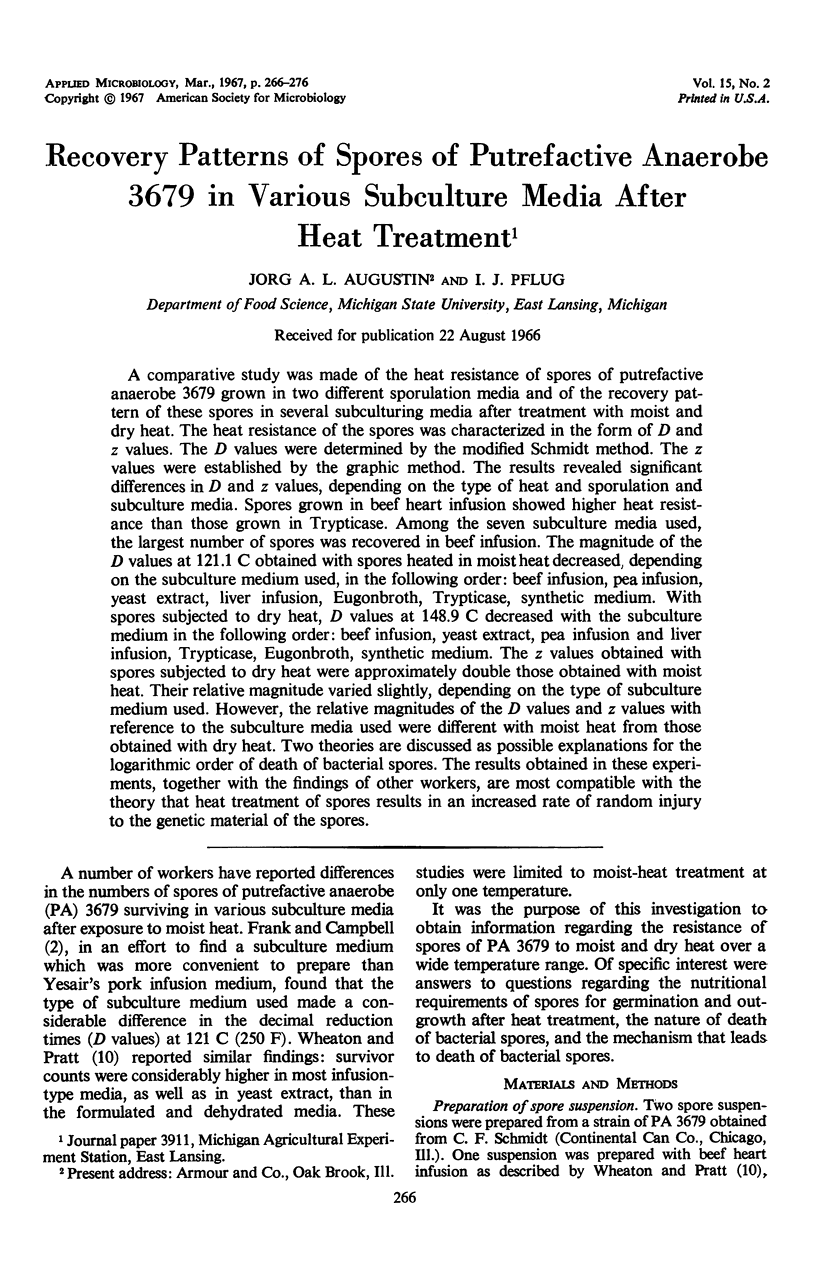
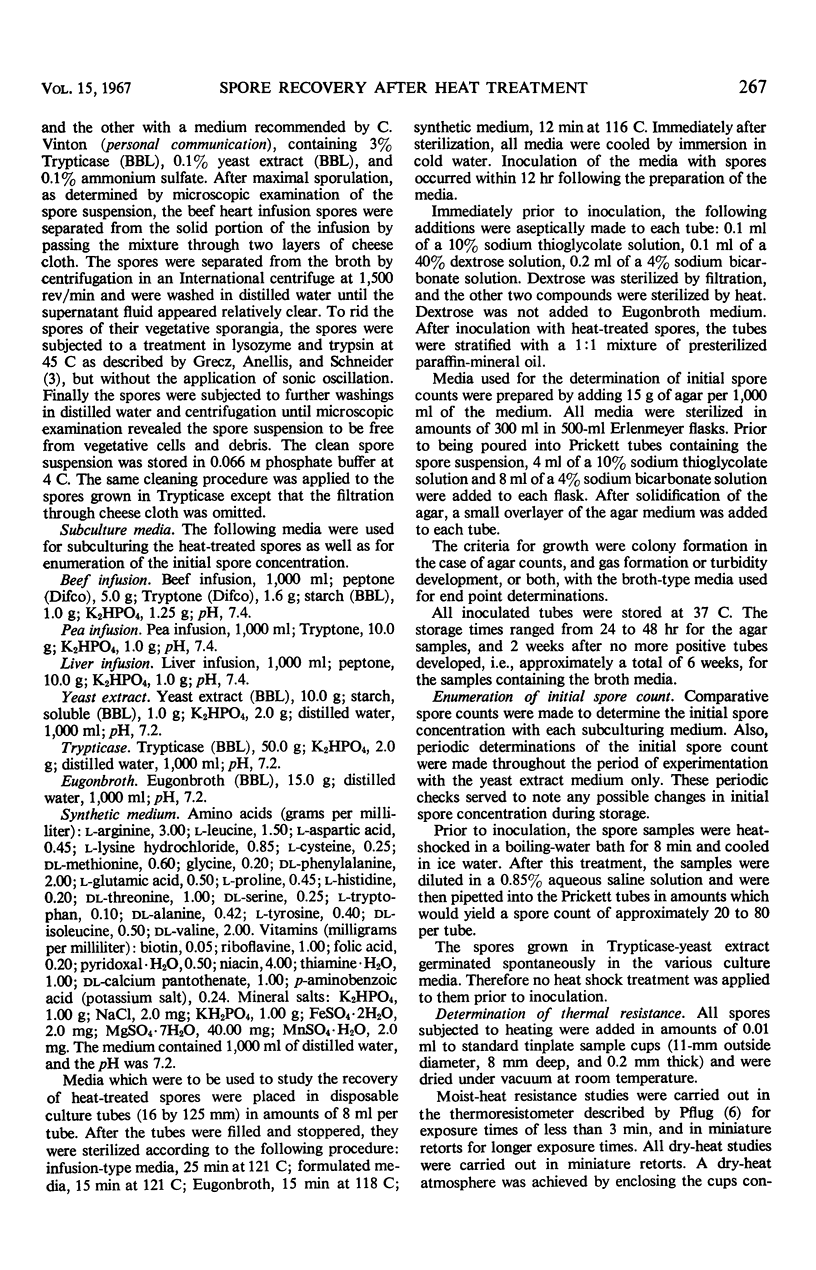
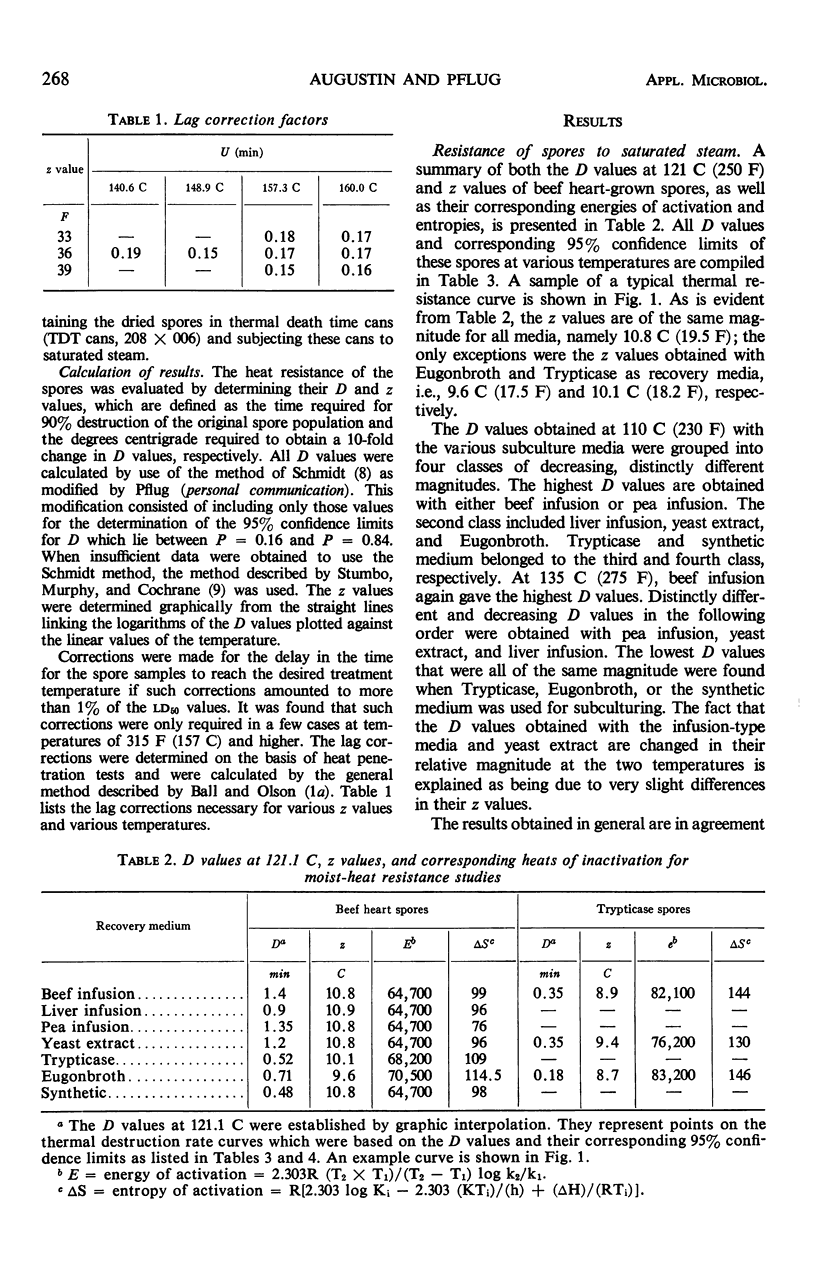
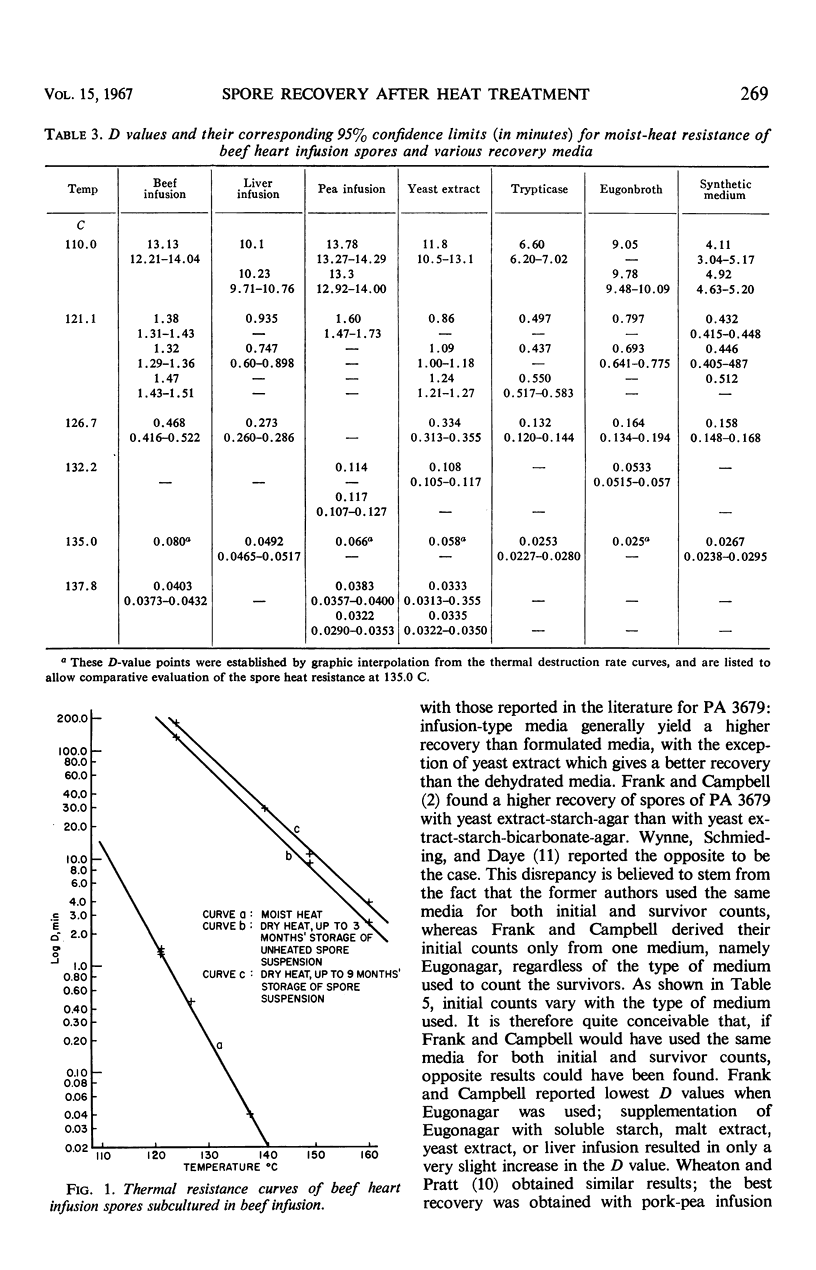
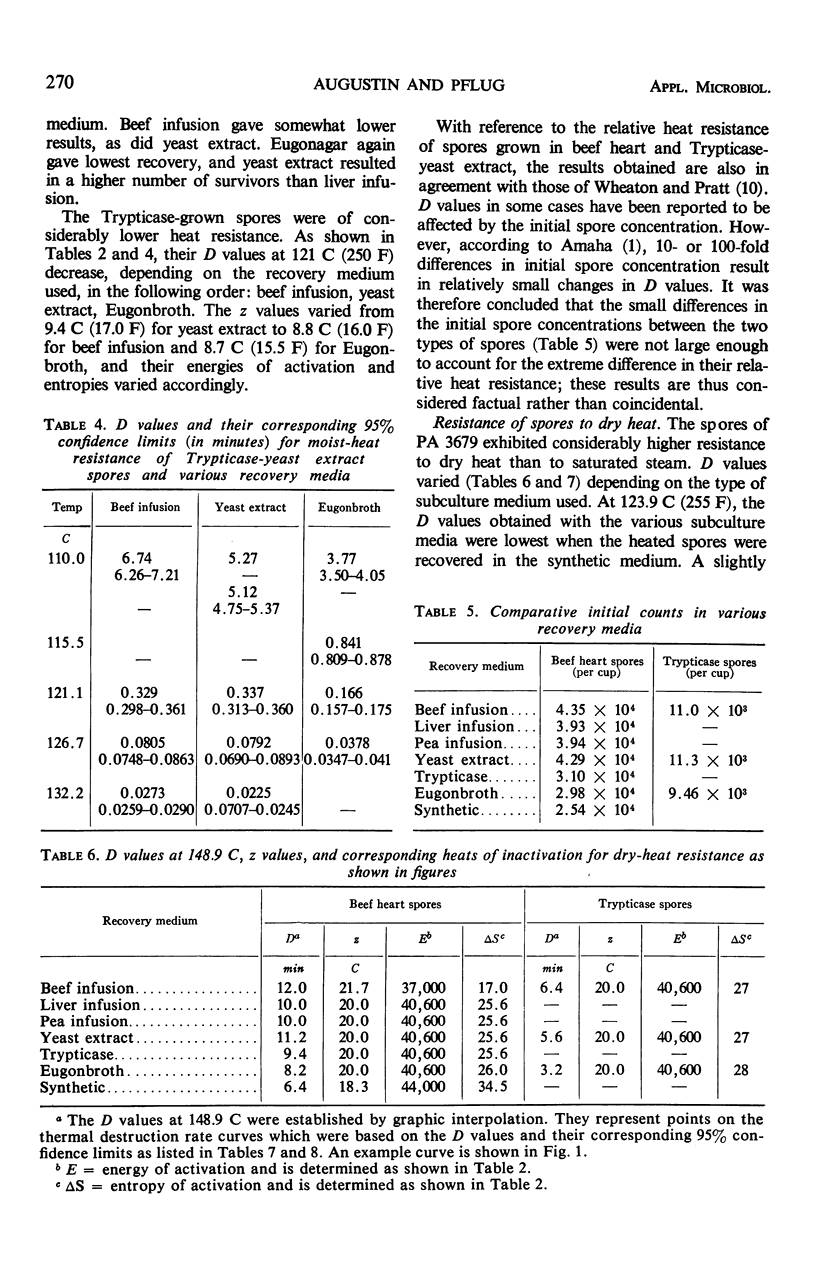
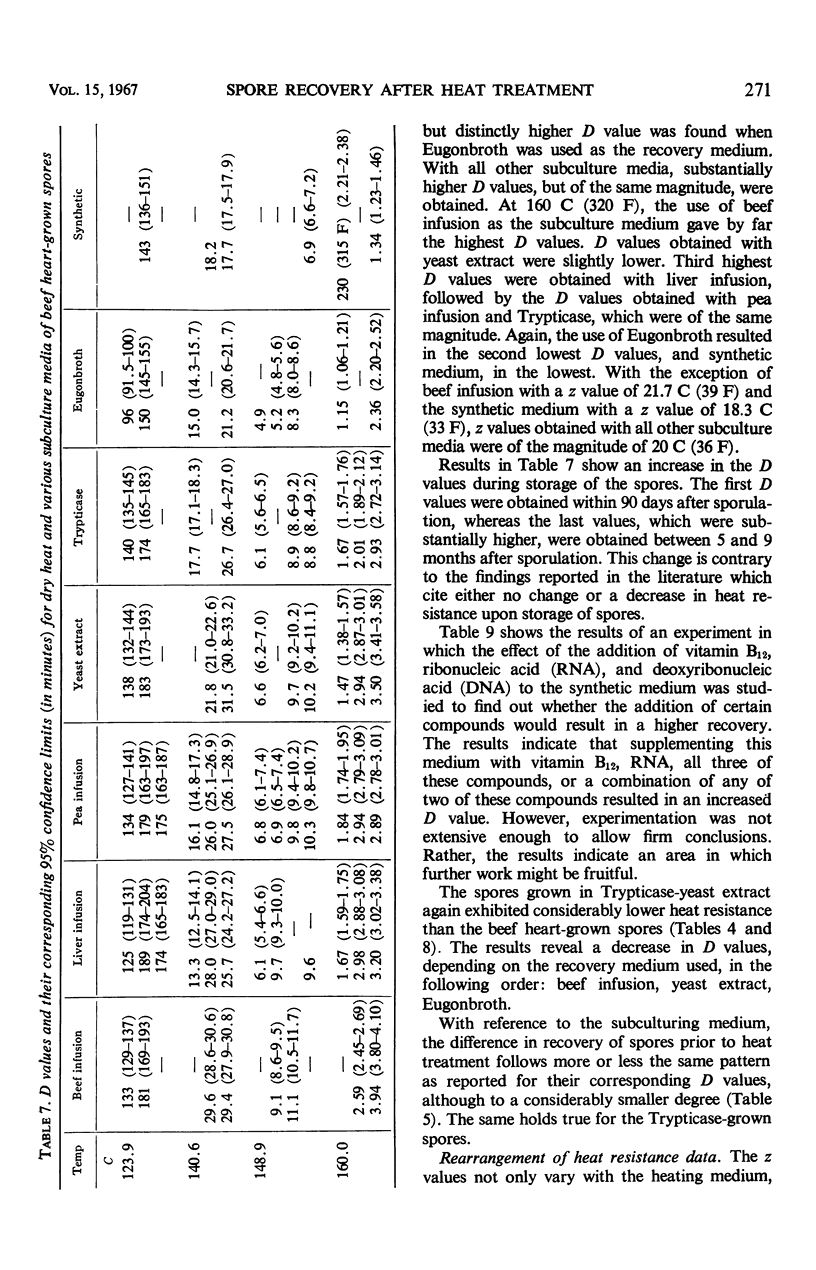
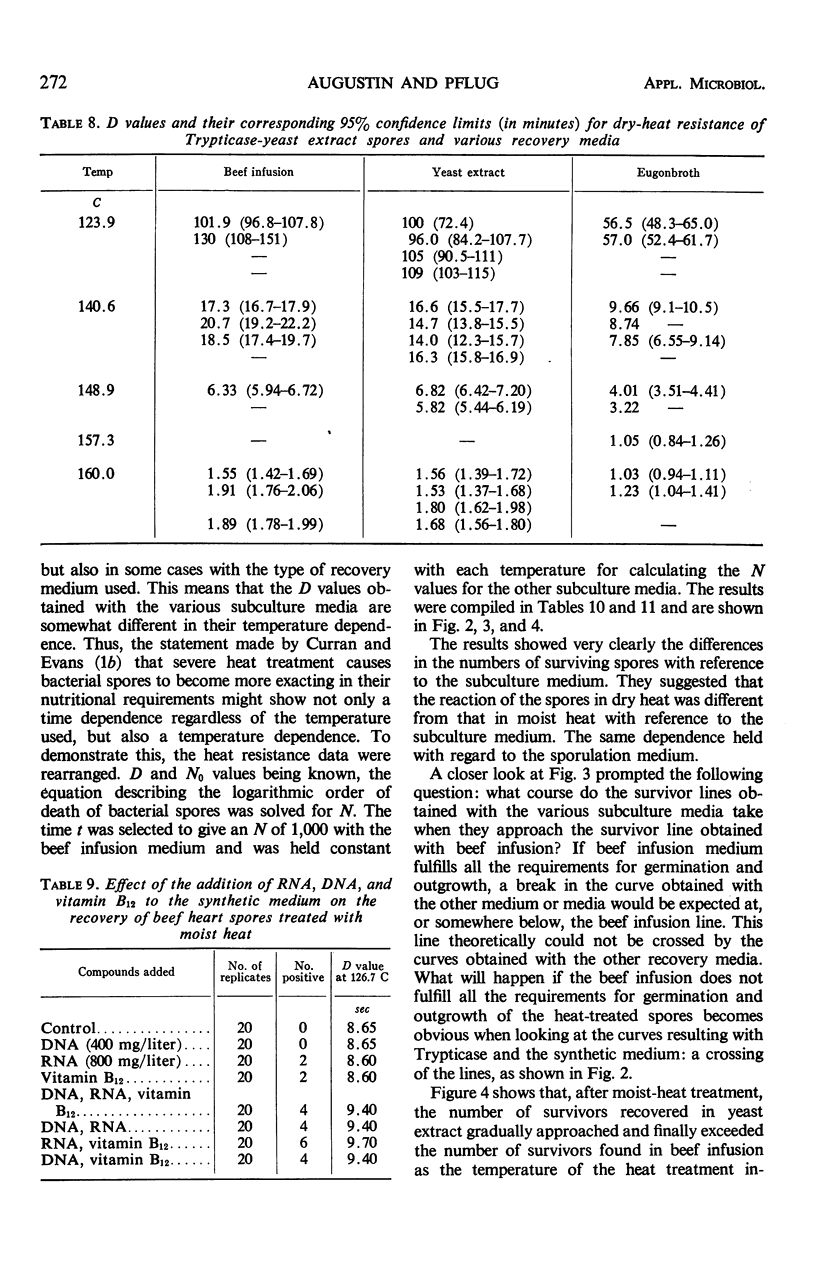
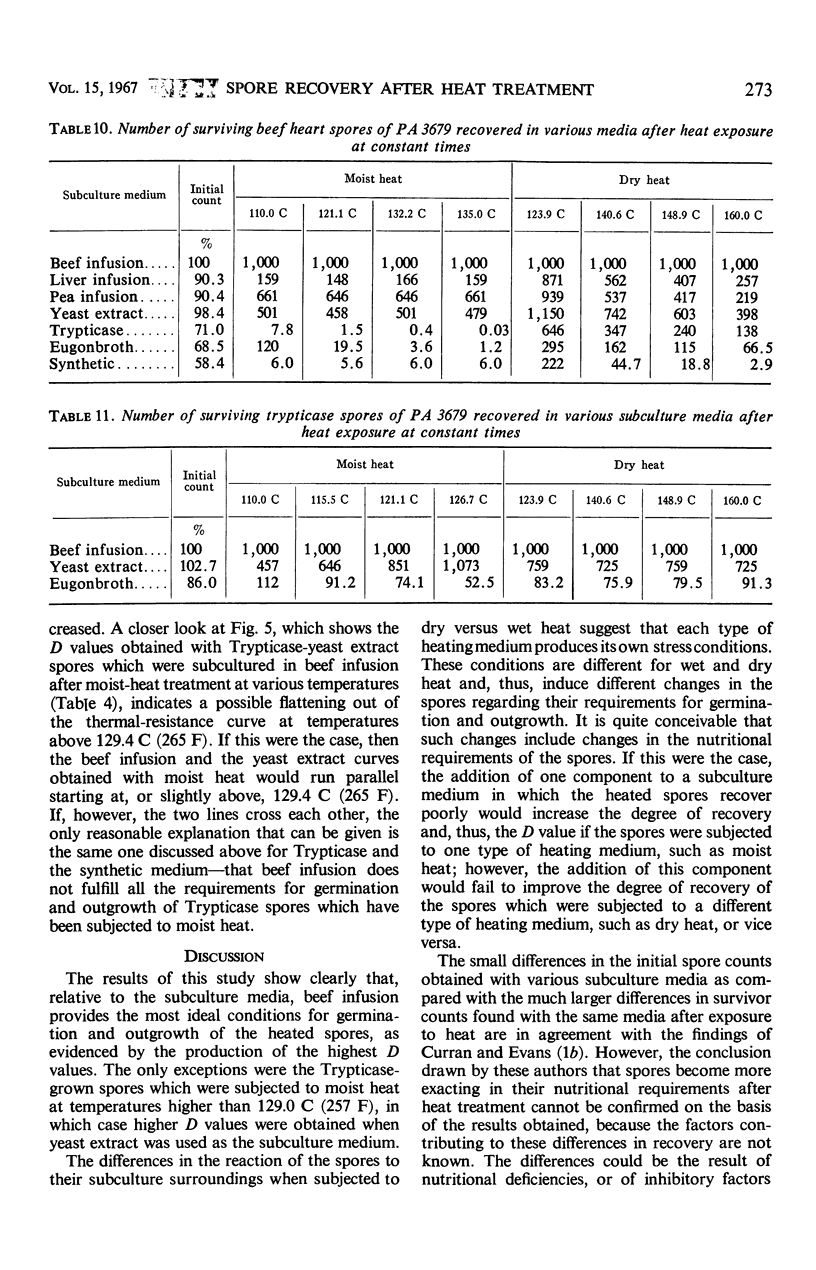
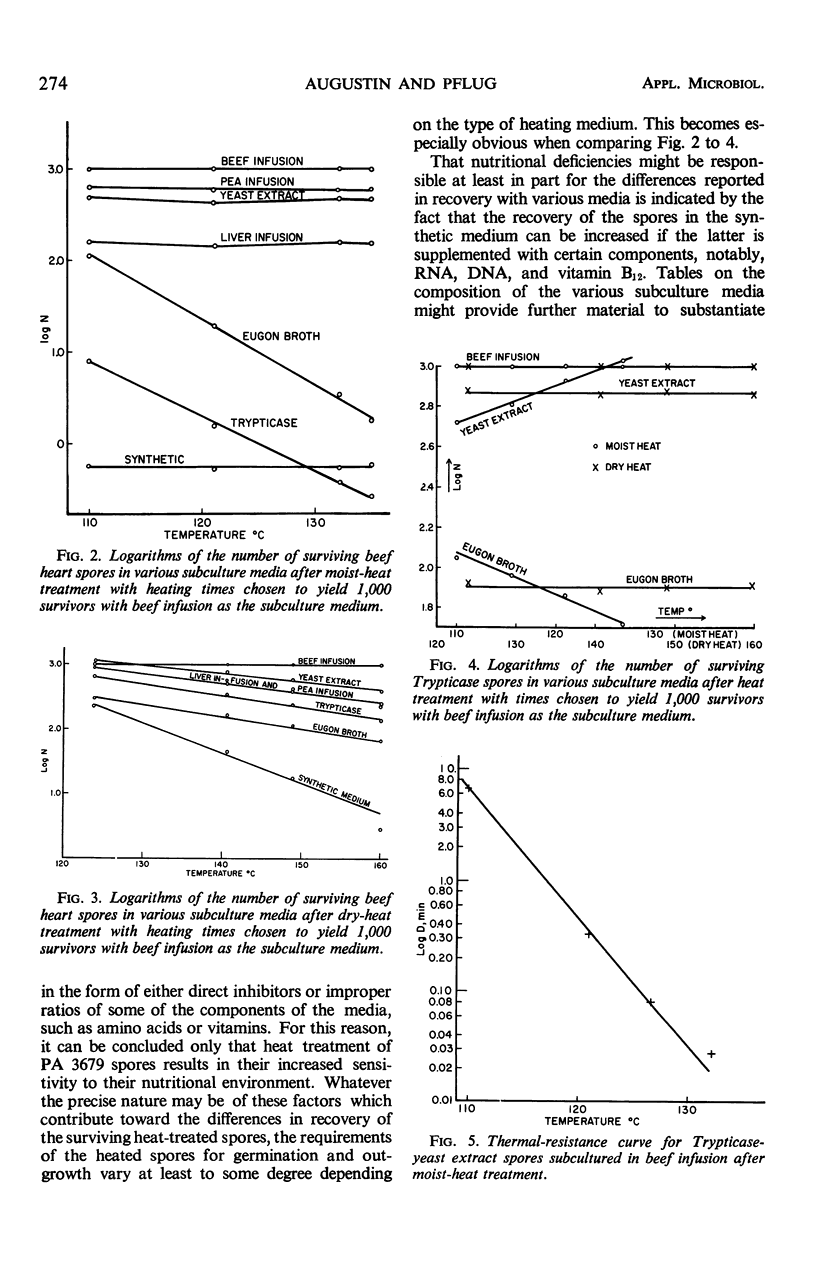
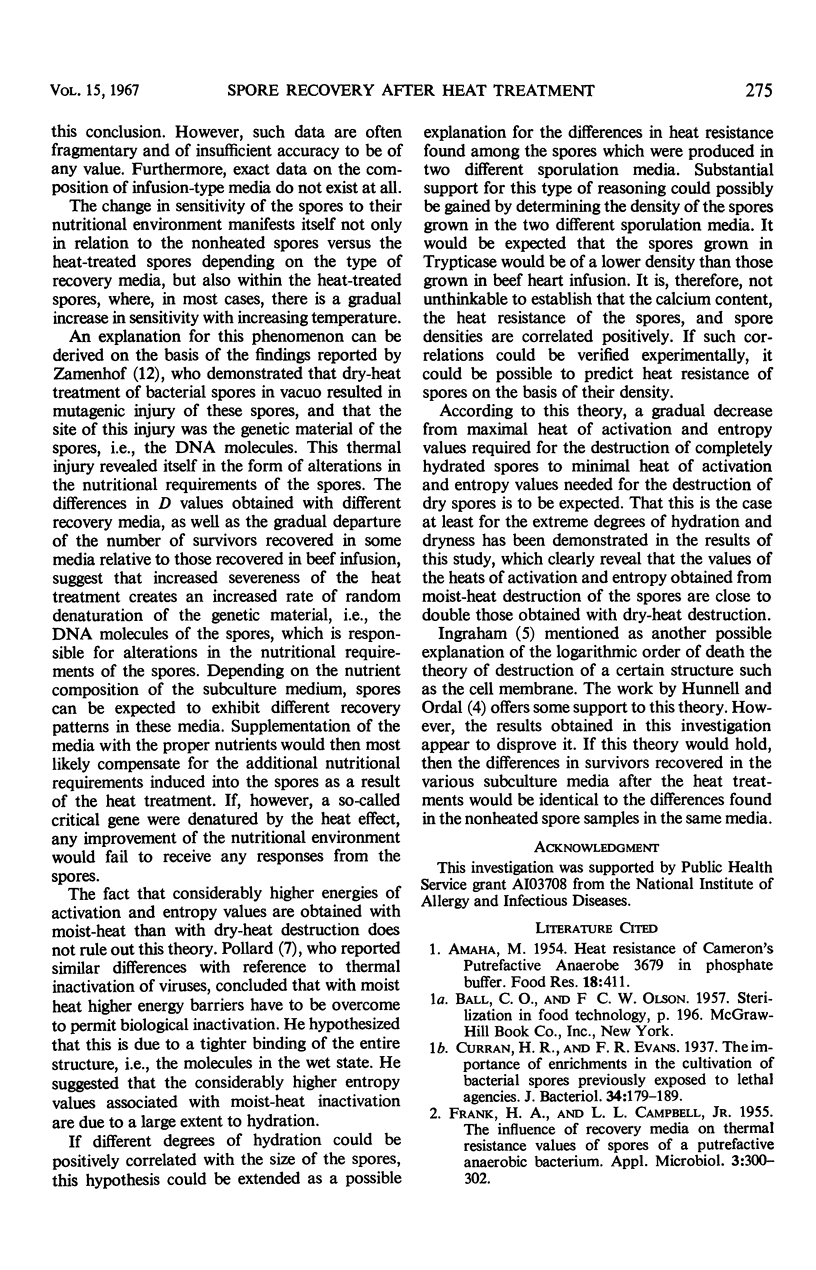
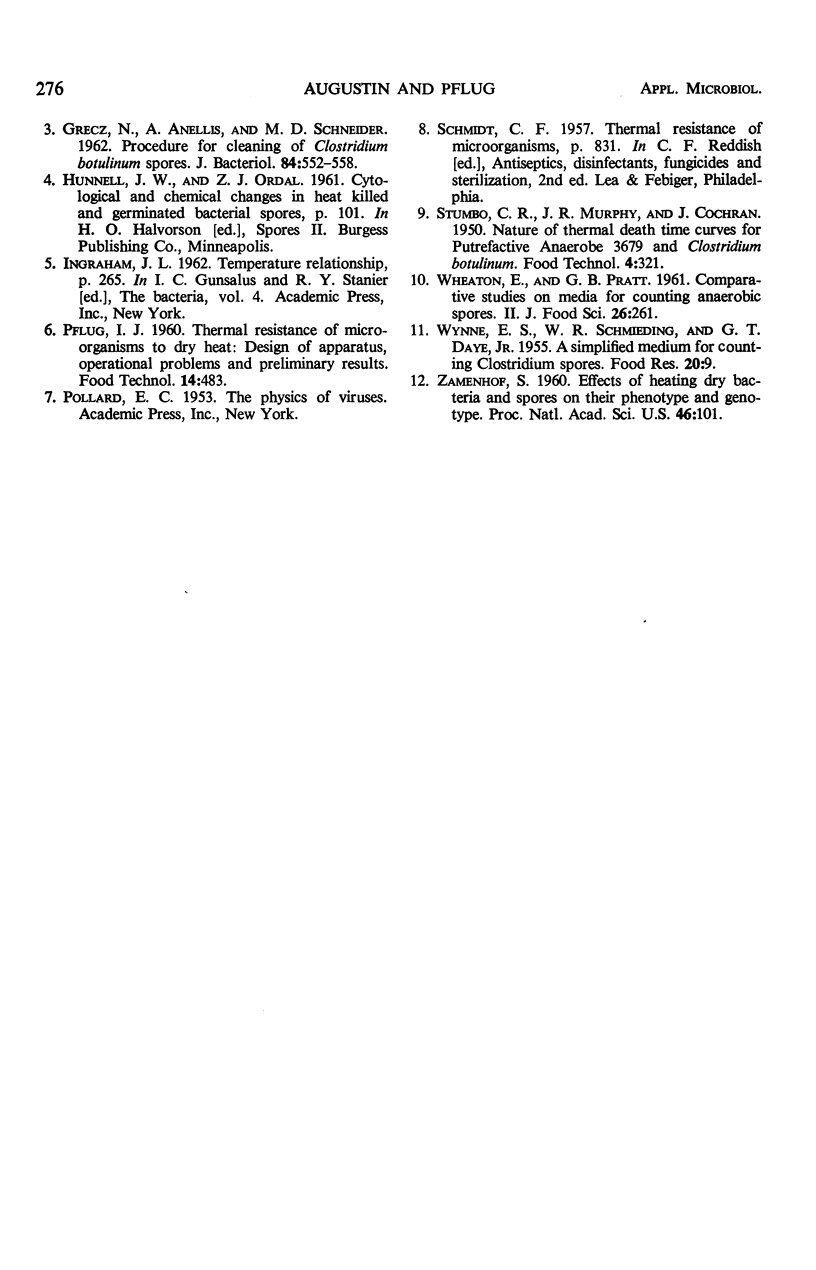
Selected References
These references are in PubMed. This may not be the complete list of references from this article.
- Curran H. R., Evans F. R. The Importance of Enrichments in the Cultivation of Bacterial Spores Previously Exposed to Lethal Agencies. J Bacteriol. 1937 Aug;34(2):179–189. doi: 10.1128/jb.34.2.179-189.1937. [DOI] [PMC free article] [PubMed] [Google Scholar]
- FRANK H. A., CAMPBELL L. L., Jr The influence of recovery media on thermal resistance values of spores of a Putrefactive Anaerobic Bacterium. Appl Microbiol. 1955 Sep;3(5):300–302. doi: 10.1128/am.3.5.300-302.1955. [DOI] [PMC free article] [PubMed] [Google Scholar]
- GRECZ N., ANELLIS A., SCHNEIDER M. D. Procedure for cleaning of Clostridium botulinum spores. J Bacteriol. 1962 Sep;84:552–558. doi: 10.1128/jb.84.3.552-558.1962. [DOI] [PMC free article] [PubMed] [Google Scholar]
- Zamenhof S. EFFECTS OF HEATING DRY BACTERIA AND SPORES ON THEIR PHENOTYPE AND GENOTYPE. Proc Natl Acad Sci U S A. 1960 Jan;46(1):101–105. doi: 10.1073/pnas.46.1.101. [DOI] [PMC free article] [PubMed] [Google Scholar]


